You’ve probably heard that Greenland isn’t that green, but did you know it once was? Or how the name came about? Or how many traffic lights there are in the country (spoiler alert, it’s a single-digit number)? We’ve got all the fun facts about Greenland you could ever need to know to shed light on how incredible it is and why it’s an enthralling Arctic destination to visit.
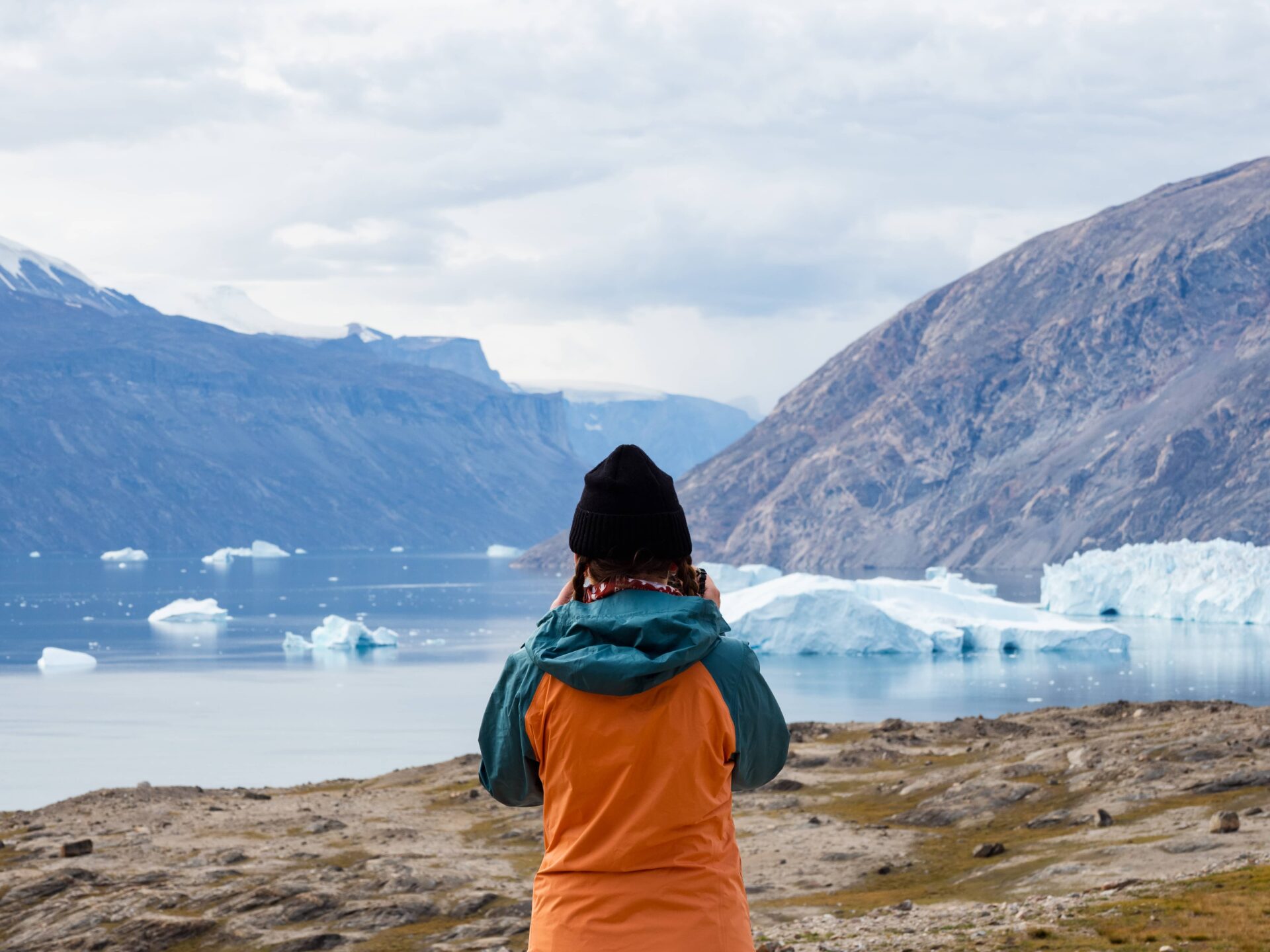
1) It’s the world’s largest island
Greenland is the world’s largest island (that is not a continent, Australia takes that prize) and is found in the northern hemisphere. It takes up about 1.45% of the world’s land mass at 2,130,800 km² (822,706 sq mi). It’s so large that even the area not covered by ice caps and glaciers (some 20%) is massive!
The Inuit name for Greenland translates to ‘land of the people’, though ironically, not that many live there! With only 56,500 residents, it’s the least densely populated place on the planet. Most Greenlanders live across 16 major towns on the west coast, with 17,000 calling Nuuk, the country’s capital city, home. The rest live across 60 small remote settlements.
The island’s smallest town is Qassimiut, population 20. Found in the mainly uninhabited South, Qassimiut’s residents rely on hospital boats and emergency helicopters, and children go to a two-classroom school. It’s about as remote as one gets in the world.
2) It was once green
You’ve heard that Greenland is mainly ice and Iceland is mainly green, but did you know it was actually once green and ice-free?
Research has shown that Greenland’s southern highlands were once home to a verdant boreal forest, some 500,000 years ago. This scientific discovery revealed not only fascinating plant life, but butterflies and insects, too. How’s that for an interesting fact about Greenland?
Way back then, it was clearly a warmer time on the planet: temperatures were positively balmy (for the Arctic), with the mercury rising to 10°C (50°F) in summer.
Nowadays, Greenland’s ice sheet, also known as Inland Ice, is one of its most remarkable features. As the second-largest ice body in the world (after Antarctica), ice covers around 80% of the island’s land mass. That’s just a bit smaller than ALL of Indonesia – all covered in ice that’s up to three km (nearly 10 ft) thick in some places! Whoa.
The expansive ice sheet, ever-changing immense glaciers, and towering icebergs are not the only interesting geological features here: the fjords are also spectacular. With over 100 fjords, Greenland boasts many opportunities to get amid the towering cliffs and witness the incredible flora and fauna up close.
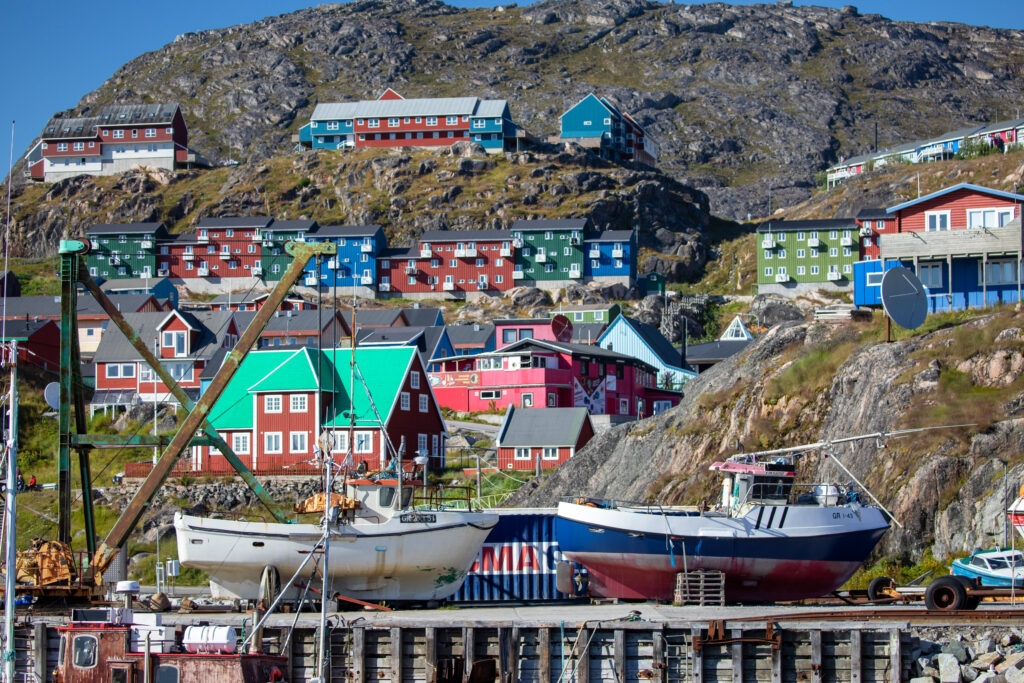
Experience the enormity of Greenland
Zodiac-cruise along fjords where you might glimpse ringed seals lazing on sea ice calved from Greenland’s enormous ice sheets—the largest in the Arctic, and perhaps encounter whales feeding in the nutrient-rich waters.
Explore the best of Greenland’s deep fjords, including the remote Kangertitivatsiaq Fjord on Greenland’s east coast, join our 'Southern Greenland: on the Trail of Vikings' for an unforgettable adventure.
Learn More
Our expedition passengers frequently comment on how much they enjoy guided hikes across the Arctic tundra. The tundra’s rocky, barren landscape is home to musk oxen, reindeer, arctic fox, and, in summer, abundant wildflowers, all of which your knowledgeable Expedition Team will you identify.
One last surprising natural feature – given its icy reputation – is the island’s natural hot springs. Watch the steam rise from the thousands of rather toasty hot springs on Disko Island, near the popular Illulissat Icefjord. Alternatively, for a relaxing soak, enjoy the mineral-rich geothermal waters on Uunartoq Island; the majestic icebergs make this an unforgettable activity.
3) It self-governs
Greenland was a Danish colony until 21 June, 1979 when it moved to home rule. This is the same date as the summer solstice and the country’s national holiday. Since 2009 it’s been a self-governed destination. The Self-Government Act means that it can make decisions on almost all matters through its own parliament, except foreign policy, defence and security.
The Greenlandic government convenes twice a year (spring and autumn) in Nuuk. Elected at least once every four years, there are 31 members of parliament, including a prime minister. To protect their interest, Greenland also has two representatives in the Danish parliament.
Although part of Western Europe politically – thanks to its ties with Denmark – this colossal island sits on the North American continent and tectonic plate. The country’s national resources, including gold, diamonds, uranium, oil and gas, make it a hot commodity. This explains its contentious geopolitical history. As global warming continues, the reclining ice sheets provide easier access to those natural resources. This would also explain why, in 2019, Donald Trump, then President of the United States, attempted to buy Greenland.
If you purchase a souvenir (not the whole island, though!), you'll pay in Danish Krone. Look out for souvenirs that include the blue shield coat of arms.
Can you guess what animal it has on it? The coat of arms of Denmark consists of three crowned blue lions!
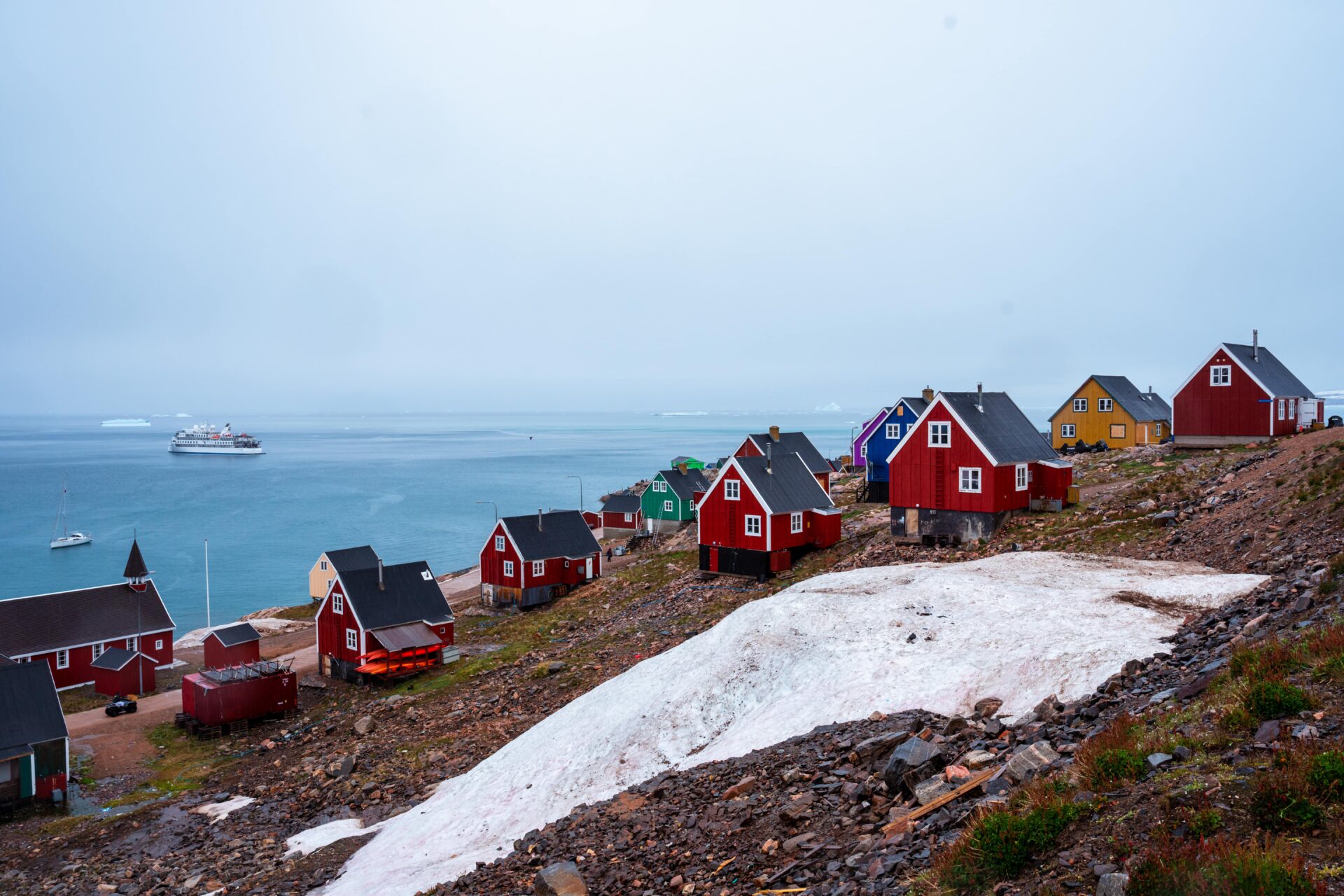
4) It has a rich and varied history
While Greenland’s ice sheet is an estimated 400,000 to 800,000 years old, evidence of humans setting foot on this frosty land dates to around 4,500 years ago. This is when the first Inuit hunters, the Saqqaq culture, immigrated from the west. The Dorset Inuit culture arrived 2,000 years later. The Thule culture, heavily represented today, landed over a millennia ago.
Greenland’s Viking history dates to the 10th century, when Icelandic explorer, Erik the Red – named for his red hair, beard and fiery temper (and as being an Icelandic murderer!) – inhabited Qassiarsuk, in the south. His fellow explorers, also from Iceland, settled further north. On his return to Iceland to gather ships, supplies, and people, Erik the Red named the island ‘green land’ to make it seem more appealing. The abandoned Viking village of Hvalsey has the best-preserved Norse ruins in the country (Hvalsey Church) and makes for a fascinating visit.
The Norse remained in Greenland for around 550 years before mysteriously disappearing. English and Norwegian expeditions followed, primarily for whaling.
The missionary, Hans Egede, from the joint kingdom of Denmark-Norway, arrived in 1721 in search of Norse settlers. He stayed to convert the locals to the Christian church: today’s Inuit are Lutheran evangelists.
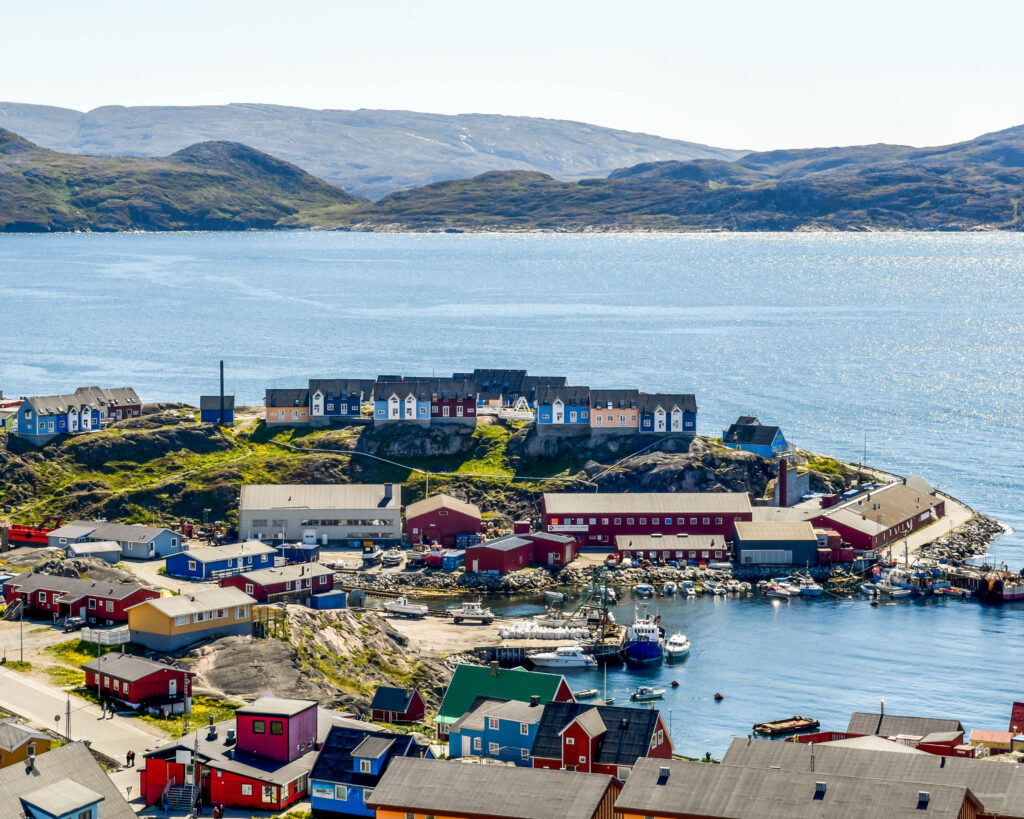
Trace Erik's footsteps on Iceland & Greenland: Following Erik the Red
Explore Iceland’s Westfjords and north coast, one of the remotest and most pristine regions in Iceland. Atlantic puffins can be found in large numbers here, so we hope to encounter these delightful creatures as often as possible.
In south Greenland, sail along Prince Christian Sound, flanked by imposing mountains. Green pastures herald where the Viking ruins of Erik the Red still stand at Hvalsey.
Learn More
5) The locals are far more hospitable than the Arctic climate
Inuit make up around 88% of Greenland’s population. On select Greenland expeditions, we will have Inuit ambassadors onboard to enhance your experience of this mesmerising world steeped in rich history and fascinating traditional culture. You will have the unique opportunity to meet Inuits in remote villages, including Ittoqqortoormiit. In some of these villages, you’ll no doubt ponder the contradiction of how the locals are so hospitable in a landscape that can feel anything but.
Since their arrival, the Inuit have thrived across the Arctic tundra and seas. Their very survival depended on their deep connection to the land and the fauna they shared it with. This is evident from their early dress, when animal hides and skin kept them warm against brutal temperatures. European beads and fabrics influenced the now vibrant national costume, worn on special occasions.
The traditional Inuit heritage of dog sledding is still alive and barking. In a place without roads, this should come as no surprise! There is only one kind of sled dog, the Canis Lupus Familiaris. These hardy pooches use their incredible strength for transportation predominantly.
Humans and dogs are not the only ones to call Greenland home. Across the island, a fascinating array of wildlife thrives in the Arctic Circle conditions. This includes the spry Arctic fox, Arctic hare, reindeer and shaggy-coated musk oxen. Off the coast, whale watching can yield bowhead, minke, orca and beluga whale sightings. There are also a variety of other marine animals to watch for, including seals and walruses. Overhead, keep an eye out for sea eagles.
6) Say “aluu”, “hej”, “hello”
Greenlandic is the official language across this Arctic land, though in three main dialects. Kalaallisut is the most widely spoken.
Danish is the country’s second language, and English is taught and spoken widely everywhere except in the more remote communities.
While you already unwittingly know two Inuit words (igloo and kayak), if you want to spread some joy, learn these Greenlandic words, too: iterluarit (good morning); inuugujaq (good afternoon/evening); ulloq naalluarniariuk (have a nice day); qujan (thank you).
While Eric the Red coined the name Greenland, that is not what the Inuit call it. You may hear the island called Inuit Nunaat – Land of the People, or Kalaallit Nunaat – Land of the Greenlanders.
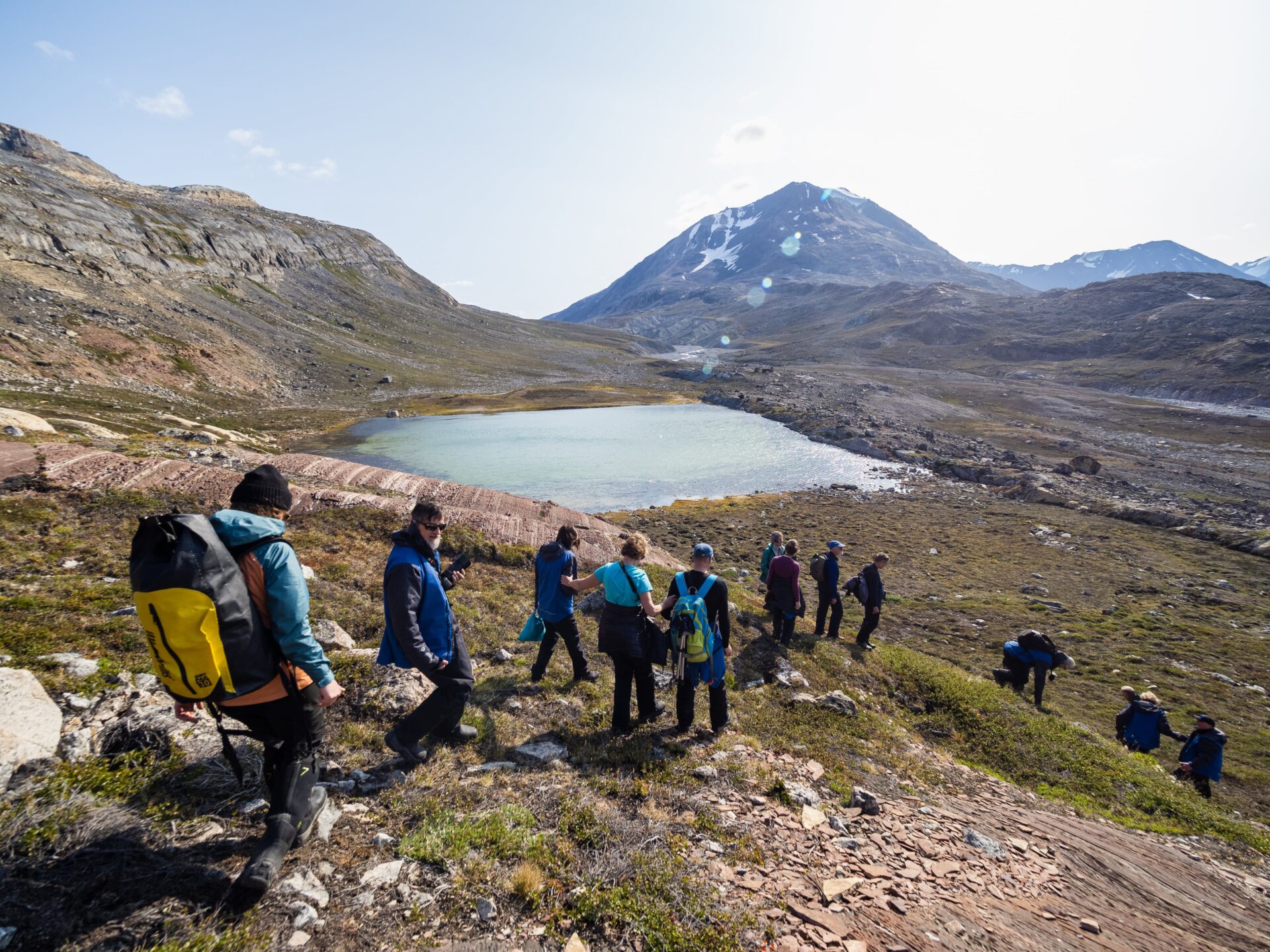
7) Vibrant towns & attractions
UNESCO World Heritage Ilulissat is one of Greenland’s most picturesque destinations, due to the attractive brightly coloured houses which contrast the mammoth icebergs that fill the bay. Greenland’s capital, Nuuk, is the country’s most cosmopolitan town, with hip cafes, fascinating museums and unique boutiques to entice travellers.
Aside from visiting postcard-perfect towns, the local flora and fauna are a major drawcard. Whether you desire to spy walruses, reindeer or some of the 280 species of Arctic birds, the wildlife wows at every sighting. Our experienced and passionate Expedition Leaders do their utmost to maximise your Arctic wildlife sightings.
Our 2025 Arctic season sees the most comprehensive Greenland program we've ever had, with new expeditions exploring Greenland's east, south, west and north-west coasts. To visit a remote Inuit community, travel on our two brand new Greenland expeditions: Wild Landscapes of West Greenland or Southern Greenland: On the Trail of Vikings. With no road to connect the townships in Greenland, flying or sea travel are the only options available. Our expeditions push through the sea ice to venture forth, to places where locals see few tourists, exploring hidden bays glittering with icebergs calved from the enormous Greenland ice sheet, and where whales may shelter.
8) The sun doesn’t set for 61 days
If it’s the 25th of May and your friend invites you over for sunset drinks in Greenland, you could be waiting a long time, as the sun won’t set again until the 25th of July!
The midnight sun is an incredible phenomenon, one people rarely get to see, occurring in Inuit Nunaat due to its high latitude. Book a stateroom on our Jewels of the Arctic to experience all-day sun for yourself. But don’t worry, while you can enjoy the sun beating on your face at 1 am, you don’t have to. Blackout blinds in your stateroom ensure you can rest on demand, despite the 24/7 solar activity.
From all-day-sun to a rare night sky, a different kind of light attracts attention in winter: the spectacular Aurora Borealis or Northern Lights. Capturing the imagination of travellers from across the globe, the Arctic’s lack of light pollution means the glimmering, crackling phenomenon across the night sky is visible to the naked eye.
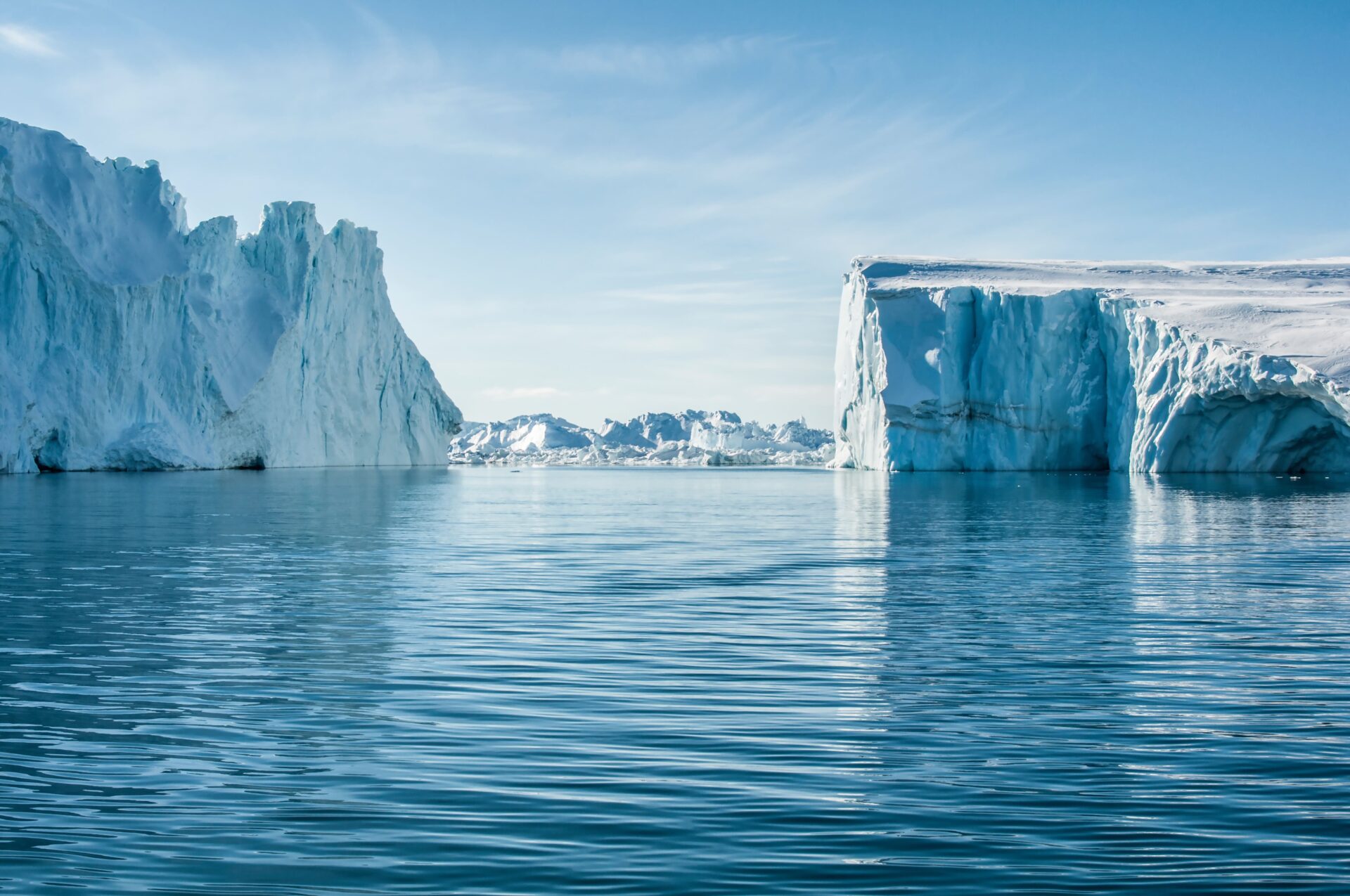
9) There are no traffic jams
Unless you count a traffic jam of icebergs as they calve off the UNESCO World Heritage Ilulissat Icefjord, there are no traffic jams here. Why? Because there are no roads between settlements, of course! And, there are only two traffic lights on the whole island. Both are in the capital (and largest town) of Nuuk.
To get anywhere in Greenland, you need to fly, sail or travel by snowmobile or dog sled. This is why our Greenland cruises are so popular – our small ships make exploring this Arctic haven effortless. It’s not only our purpose-built vessels that give you access to the best of Kalaallit Nunaat, but also our 16-person Zodiac boats that get you even closer to the action. Action like wildlife spotting, trips ashore, hiking, and for those photos you can humblebrag with when you get home.
To fully immerse yourself in the grandeur of Greenland, consider adding an optional activity, like sea kayaking.
10) Now’s the time to go
Tourism is an emerging industry in Greenland, with around 100,000 visitors annually (compared to Iceland’s 2.2 million tourism industry). So, now is an ideal time to visit this Arctic wonderland, before the rest of the world catches on!
As you might expect from the largest island in the world, the sea is its bread and butter. Fishing is the country’s lifeblood; everything else is imported, aside from some hunted tundra meats.
Luckily, there is an alignment between the Greenland government and Aurora Expeditions’ focus on sustainability: the desire to protect the fragile environment and rich cultural heritage goes beyond lip service. The government encourages visitors to this far-flung Arctic island to meet local communities and discover Inuit traditions while enjoying eco-friendly adventures exploring the country’s fascinating landscape, flora and fauna.
What are you waiting for?
Keen to get even more amazing Greenland facts by actually travelling there? Reach out to our expert team with your questions or to book your Arctic expedition and visit Greenland! Check out some expeditions below or download or pre-order our latest brochure to see the full range of itineraries.


